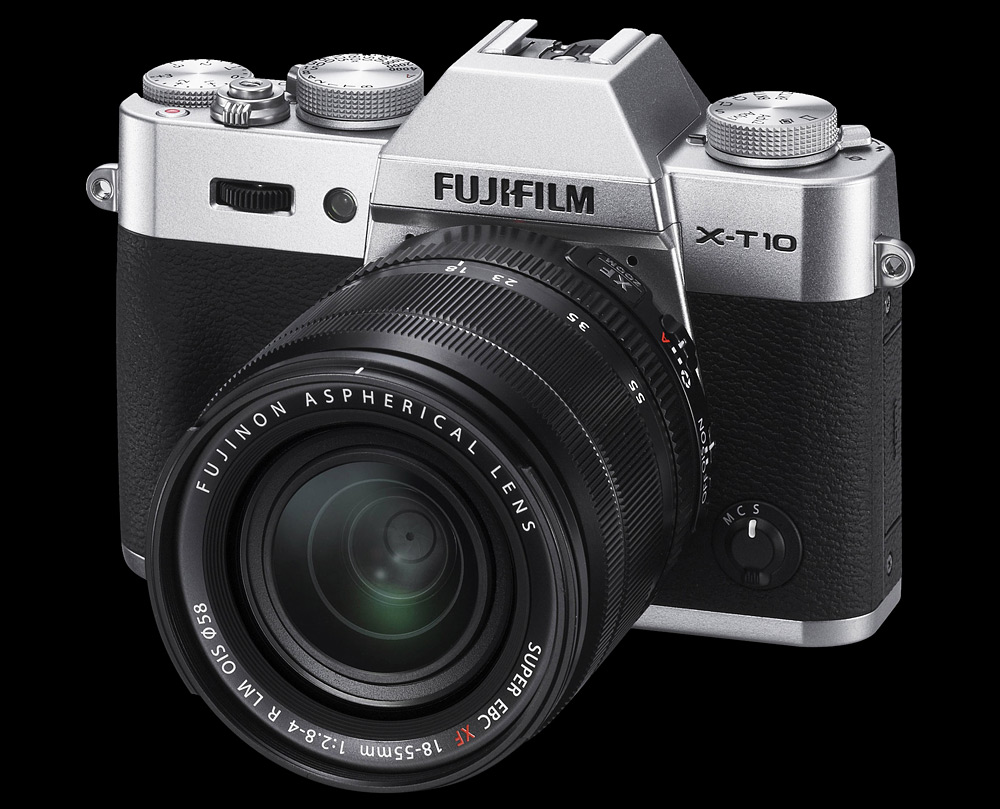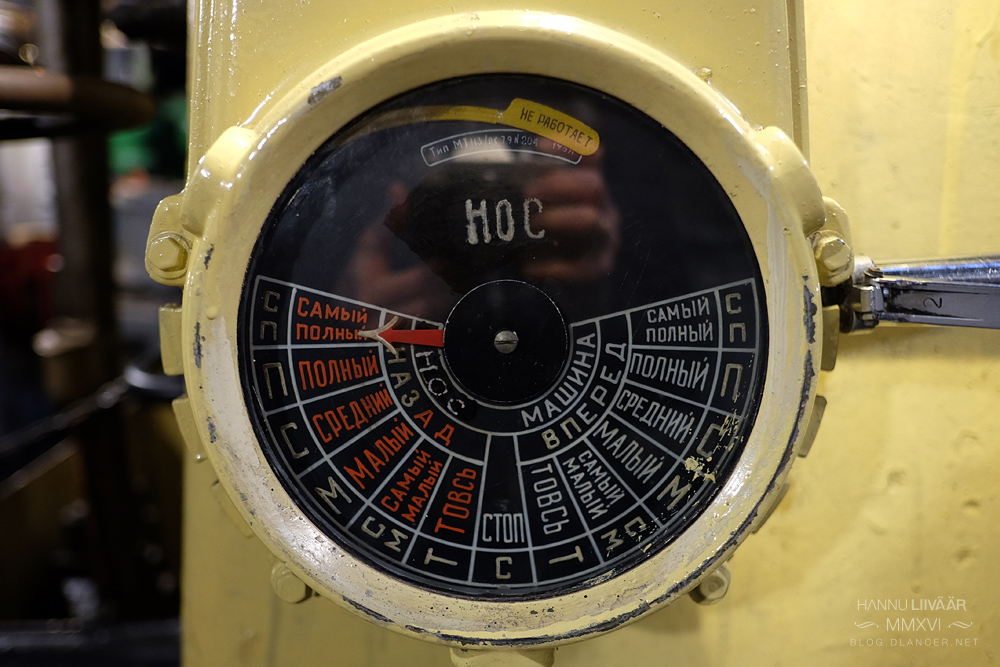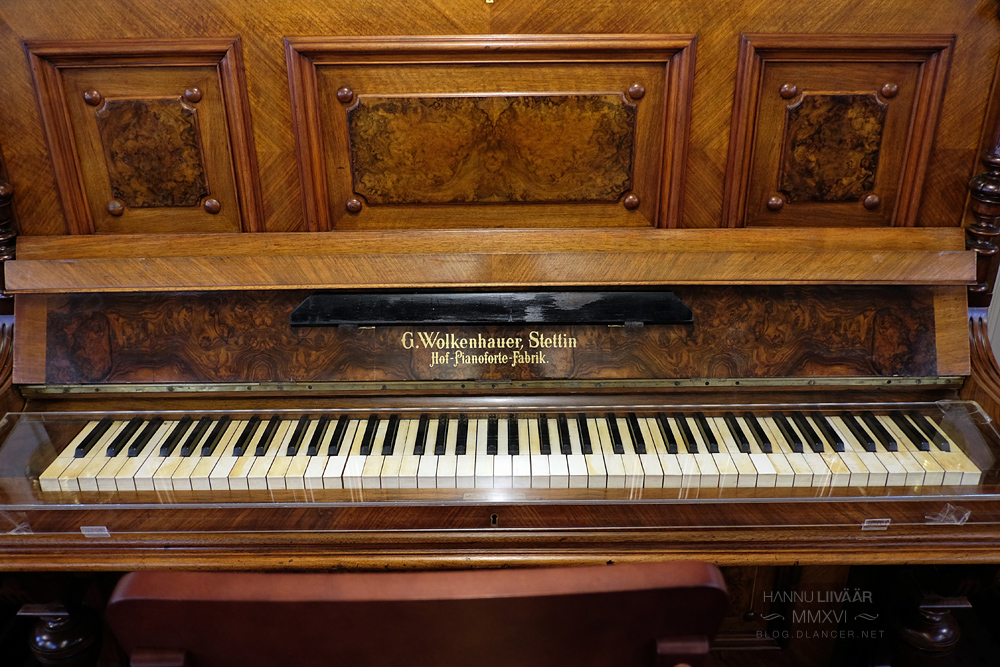Fujifilm X-T10 Review
Thank you Nordic Digital for providing the camera for testing.
I'm a newbie when it comes down to Fuji cameras so I'm all excited to try one of the latest APS-C cameras from Fujifilm, the X-T10.
The history of Fuji mirrorless/hybrids goes back a couple of years with the model X100 (introduced in 2011) being warmly welcomed by the loyal Fujifilm users. While the X100 and X100S have a fixed lens design, the X-Pro1 (2012) introduced an X-mount interchangeable lens system with several prime lenses introduced. With several variations in production including semi-pro (X-T1) and consumer grade (X-A*) bodies, the X-T10 was announced in 2015 with target audience being "serious enthusiasts" meaning it was not up to the level of X-T1, but was equipped significantly better than the X-A series cameras. The camera is full of innovative technology in a pretty compact body and it offer plenty of joy for a photographer with some cons and downsides as well, which makes the overall impression of the camera quite contradicting.
Here we go with the nice looking X-T10 silver body equipped with two prime lenses (18/2 and 60/2.4Macro), let's see what the camera was capable of and how it performed in different shooting conditions (and a couple of sample photos as well).
The X-T10 has some characteristics and it is definitely of of the most intriguing units I've recently handled. The classical/retro design, pretty unique approach of how to use the camera and of course a nice selection of lenses (including the long-awaited 16-55/2.8 and the 50-140/2.8), which, as per feedback of the users worldwide, already are widely recognized as something of really high quality offering excellent optical performance. Price/value wise, the X-T10 is positioned somewhere "in the middle", so much more affordable than the flagships X-T1 and X-Pro2, however a bit pricier than the entry level bodies.
Opening the box I like the conservative approach of the design of the X-T10 body. I'm pretty sure anyone having a film camera by Fujifilm today would find the retro design just awesome. The unit it relatively small though, also packed with buttons/controls, so I'm having a little tough time to find a comfortable position for the right hand. A bit of disappointed of the body ergonomics at a glance, I'm still happy to go out shooting with the lovely build quality prime lenses, and after all, I'm sure I'll get used to find a comfortable grip with the camera body soon.
I'd like to dedicate a special chapter for the viewfinder(s) of the X-T10. While the 920k LCD screen works as a standard external viewfinder, the small in-body EVF is something you'd be likely to be excited much more - it has a whopping 2,54 million not resolution offering very sharp image for the eye; not still up to the level of what a full frame optical viewfinder can offer, but it is not far behind. My first digital camera (Panasonic FZ-10 back in 2004) had a 144k dot EVF, which makes the picture ~18x blurrier than with the X-T10. What a progress. The speed of the X-T10's EVF is also moderately good, no noticeable lags whatsoever; it can also amplify the dim light when it is getting dark outside, meaning you can "see" quite well in poor light conditions.
You cannot find the traditional P-A-S-M dial at your X-T10. All these modes are actually there, but integrated in a different way. A very nice feature the X-T10 offers are the "red dots" (or red noise) around the focused area when you are in manual focus mode - an excellent help when using the manual focusing without any need to use the magnified image. The A (aperture) mode fits nicely with the classical look of the camera - the aperture can be set using the aperture ring at the lens, this is how it used to be at good old times :) .. Thinking about the usability (and the logics of how the camera works) of the camera, I cannot find anything to complain about. Never had a need to open the user manual, therefore can grade the usability to be excellent.
I cannot help not complaining about the body hand grip design though. As mentioned at the start not finding a comfortable position to hold the camera, I never did find it. If you take the camera with your right hand, your covers many of the buttons next to the LCD unit; these buttons are, however, very easy to be clicked, so you very probably end up with pushing these buttons not willingly, ending with messed up settings. A solution would be to hold the camera with your fingertips only - an excellent way to get blurry photos as the holding position is not steady at all (very uncomfortable to hold, similar to hold a smartphone). Another solution would be to disable all buttons, so nothing happens when you click them. But why on earth to have a button with no function at all?.. So at the end, I'd cover all the buttons with a solid piece of metal which is obviously an absurd solution, but I'm deadly serious the grip issue is the worst I've seen so far, so if there was no choice, this is what I'd definitely do. Thinking back about shooting with X-T10, the body design (grip wise) was a real disaster. Fuji, are you listening?
Now as I feel some release being able to tell about the grip, let me share some positive experience as well! No bad without the good, and this is what the contradiction means with the X-T10.
Back to the body design, the build quality is very good. After being shot with the camera for three days, I discovered there's a built in flash also included! This one was hidden so well I didn't even notice it. The flash cover is actually plastic (while the body is all metal), but the finish is so identical you really have to use a magnifier to see the difference in surface finish. The engineering of integrating the flash unit mechanics is also so precise that you almost cannot see any gap between where the edges of the flash units go. As with the integrated flash units, I never use them, I'd rather use the real estate for better battery life for example..
The shutter of the X-T10 is almost silent, making it possible to use it discreetly as needed. You can choose between electronic and physical shutter. The battery life was OK for a hybrid, 400 shots should be approachable with a single charge. A spare battery (or two) is recommended for a whole day out shooting.
I find it awesome to have such a high quality photo equipment available at such a small body. This ultimately means if you use a small prime lens (18mm F/2 qualifies well) you can easily fit the camera in your pocket (well, a medium size pocket :-). The X-T10 definitely is a lifestyle thing as well - how cool it would be to take the awesome looking camera out of your pocket while the others only have their smartphones?
As with the picture quality the camera has to offer, you will not be disappointed. It gives you the standard great photos any DX sensor (~24x16mm) can provide today. Quality of the Fuji X-mount lenses are very high so the potential is there to get awesome looking images. If you care about RAW files as well, you can consider your photos to get from good to great, or from great to awesome. I have read some users complain about Fuji sensors not being at the level of what Sony can offer today (many manufacturers use Sony sensors today), but I would say it is not an issue when you are shooting in regular, good light conditions. Yes, when it comes to dim/poor light the sony probably wins at some aspects, but these are the only rare cases. It is more about the lens and of course, about the one who presses the shutter button.
The final word. I believe the X-T10 is a good choice for: 1) a fanatical Fuji user; 2) a Photographer owning nice selection of X-mount lenses; 3) a modern person desiring something better than the smartphone (while compactness is still important). For my personal taste, I like the quality of the Fuji lenses, and this would be the reason alone to go with Fujifilm cameras. Heck, and I only had a chance to try 2 of them :-) As with the body, the X-T1 would today perhaps be the best choice - even though I never had a chance to have my hands on X-T1, looking at the grip design no doubt I have the ergonomics would work better for my needs. So this is the major fault I can see with the X-T10 as well - a poorly designer hand grip of the body. The rest is really nice - so looking forward to the successor with this issue improved.















No comments:
Post a Comment